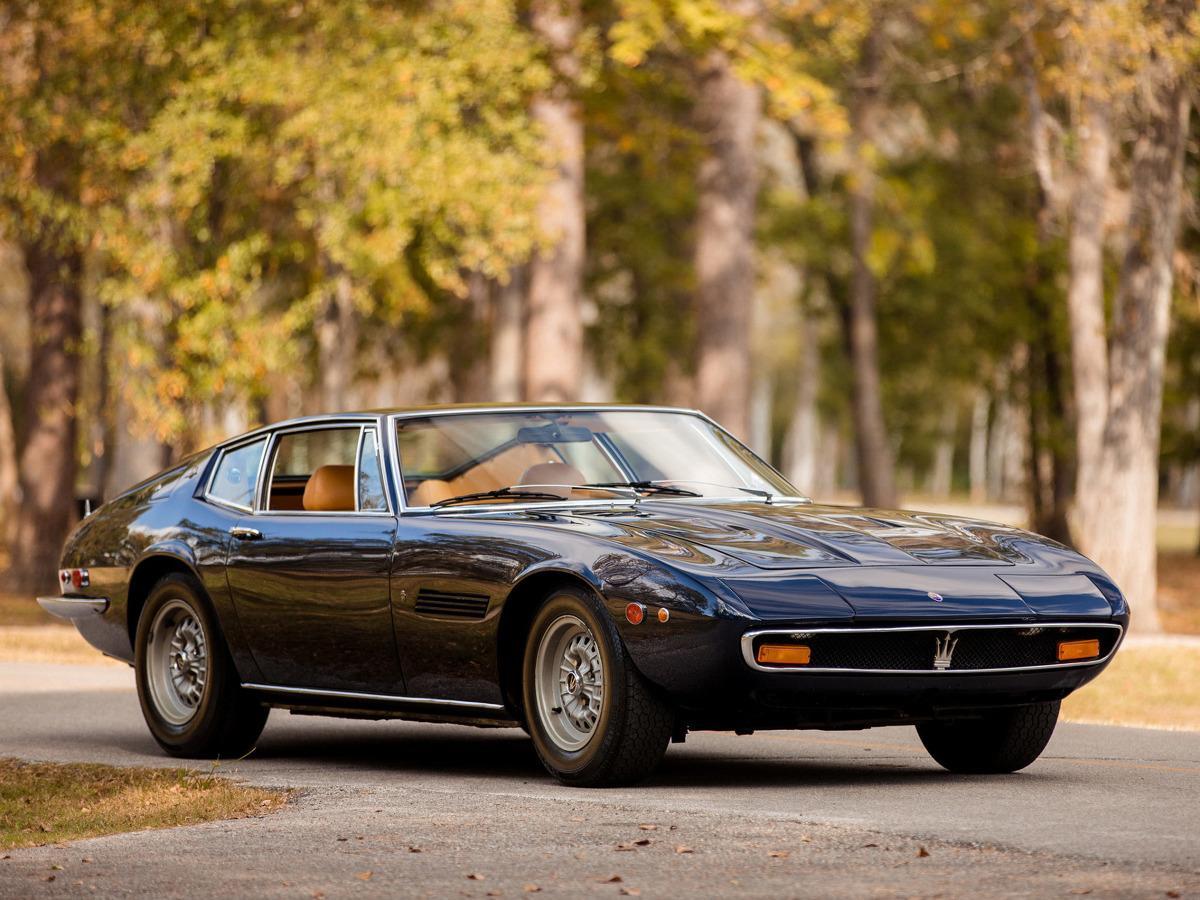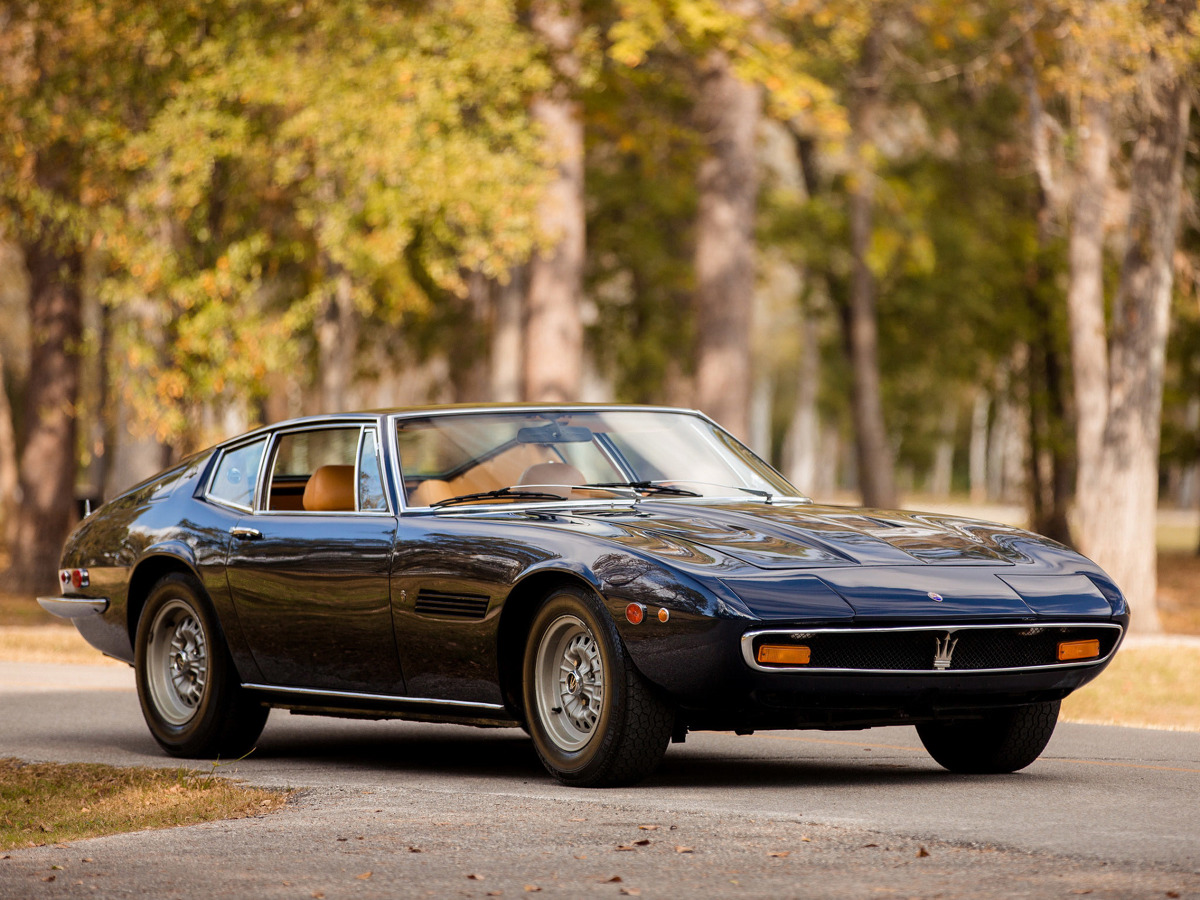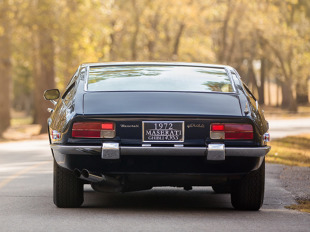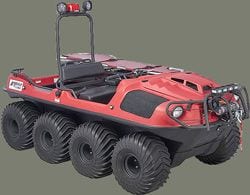
Maserati Ghibli. A legend with Neptune's trident
 Exotic and swift, like the Libyan wind for which it was named. 50 years after its debut, the Maserati Ghibli still evokes emotion and impresses with cutting-edge design. To reduce the weight of the car, the rims were cast in magnesium. Nothing prevented you from choosing classic spoked rims from the list of options. After all, style is the most important thing in an Italian car.
Exotic and swift, like the Libyan wind for which it was named. 50 years after its debut, the Maserati Ghibli still evokes emotion and impresses with cutting-edge design. To reduce the weight of the car, the rims were cast in magnesium. Nothing prevented you from choosing classic spoked rims from the list of options. After all, style is the most important thing in an Italian car.
 This is the Maserati secret. Be different. This is not so easy with strong competition and can be expensive. Even life. However, the worst for the company is probably over. After years of happy and very unfortunate events, it is now owned by Fiat Chrysler Automobiles (FCA) and continues to make cars that escape the applause of the crowd. Like Venetian furniture, they delight the eye of connoisseurs.
This is the Maserati secret. Be different. This is not so easy with strong competition and can be expensive. Even life. However, the worst for the company is probably over. After years of happy and very unfortunate events, it is now owned by Fiat Chrysler Automobiles (FCA) and continues to make cars that escape the applause of the crowd. Like Venetian furniture, they delight the eye of connoisseurs.
Always been like that. Whether thanks to Neptune's magnificent trident in the trademark, or thanks to a cluster of talented designers and stylists, Maserati stood out. Sometimes the design-eating ambition hurt the company's box office performance. The first Quattro Porte (as the name of the model was then written) in 1963 had a complex and expensive rear suspension with a De Dion axle on coil springs. In the modernized, second series of 1966, they were replaced with a conventional rigid bridge.
In the same year, Ghibli flashes flashed at the November Motor Show in Turin. It was the second Maserati car to be named after the wind. The first was the 1963 Mistral, named after the cold, gusty northwest wind that blows in the south of France. For Libyans, "gibli" means "sirocco" for Italians, and "jugo" for Croats: a dry and hot African wind blowing from the south or southeast.
The new car was packed like heat and stretched like dunes. Strong, courageous, no frills. All “decorations” have been expanded at the entrance
air, window frames and a pointed rear bumper that goes deep into the sides. It wasn't until 1968 that vertical tusks were added to the front. The headlights are hidden in the long engine hood and raised by an electric mechanism. All this rests on rich twelve-spoke fifteen-inch alloy wheels. And most importantly - a trident. Otherwise, silence. Silence before the storm.
The bodywork was designed by Giorgetto Giugiaro, who was then 28 years old. He created them in just 3 months! It was his first job since he moved from Bertone to Ghia. Despite the years and many great cars, he still considers the Ghibli one of his best designs. Comparing Maserati to its peers, the superb but more delicately styled Ferrari 365 GTB/4 Daytona or the grand, dynamic Iso Grifo, one can see the Ghibli's completely unbridled, masculine energy.
The editors recommend:
Recommended for five year olds. Overview of popular models
Will drivers pay the new tax?
Hyundai i20 (2008-2014). Worth buying?
The car's body shape, combined with the overall design scheme, makes it "the finest American car made in Modena". The Ghibli is powered by a V-1968 engine and, like the Mustang of those years, has independent wishbone suspension with coil springs in the front only. A rigid axle with a leaf spring and Panhard rod is installed at the rear. From 3, a Borg Warner XNUMX-speed automatic transmission could be ordered as an option. The base transmission was a five-speed manual ZF. Like Chrysler cars of the time, the Ghibli had a self-supporting body with a subframe to which the engine and front suspension were attached. Only the brakes were completely "un-American": with ventilated discs on both axles.
Also, the front seats, which had a comfortable, restraining shape, were significantly different from the seats that the Americans, in their naivety, called "bucket seats." The Ghibli was designed as a two-seater, but the production version had a narrow bench at the back for two additional undemanding passengers.
The dashboard was covered by a wide dark window sill. Below it is a set of conventional, "automatic", but legible indicators. A huge tunnel ran through the center of the car, covering, among other things, the gearboxes. Since the Europeans did not dare to produce cars with a width approaching 2 meters (the current Ghibli is 1,95 meters), there was not enough space for the handbrake lever. It's unnaturally advanced.

